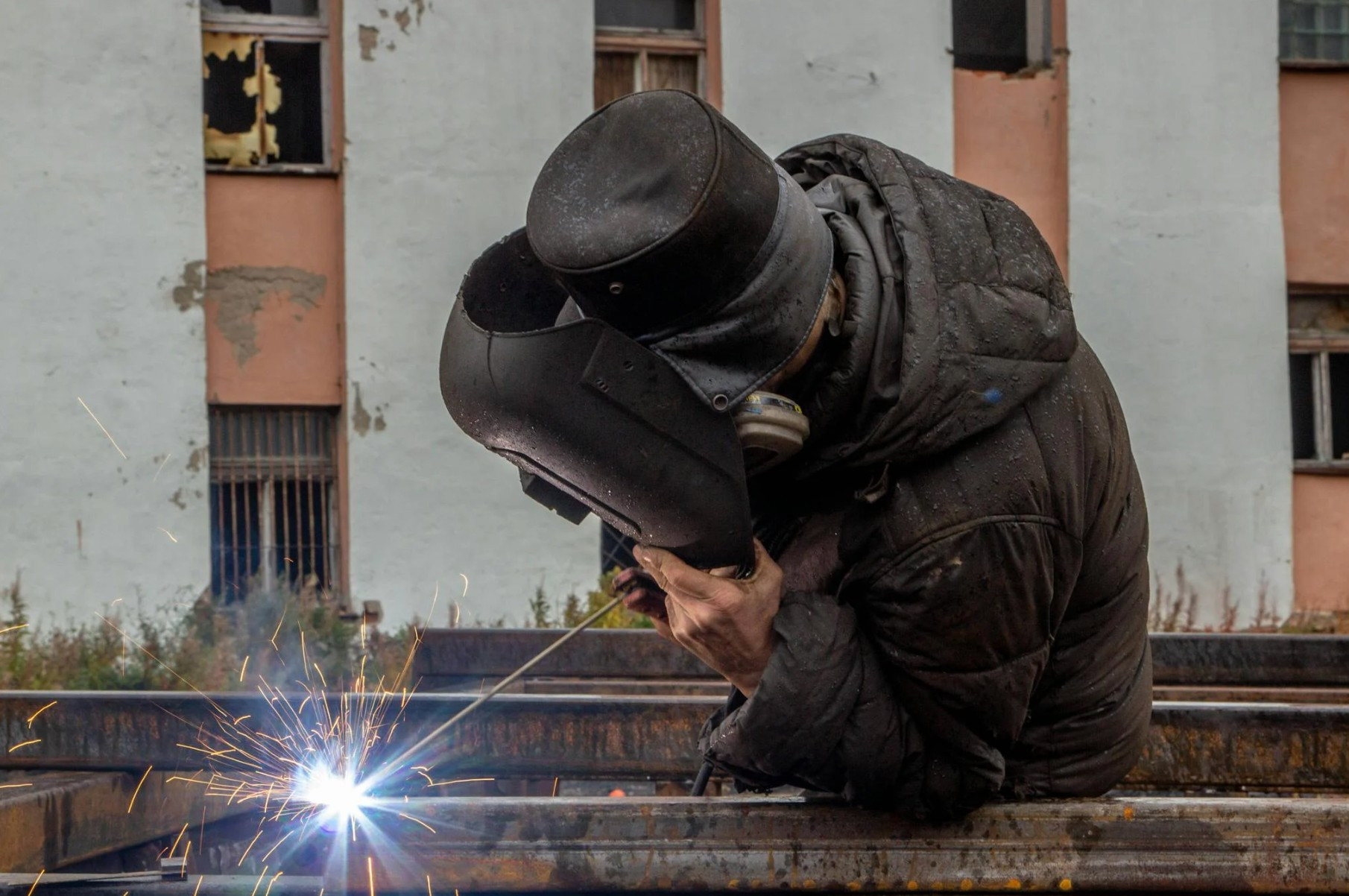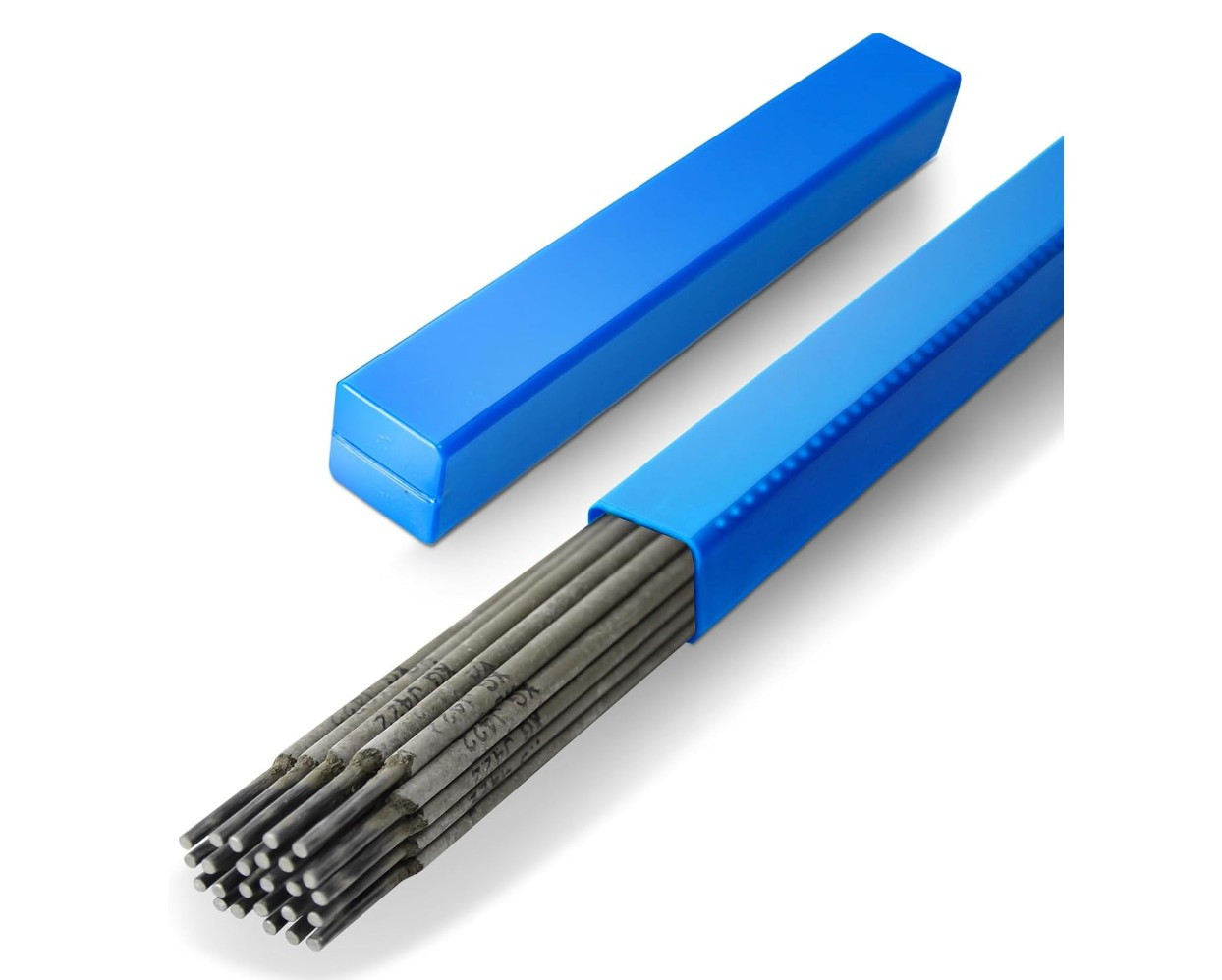Outdoor welding projects can be tough. You deal with wind, rain, and uneven surfaces - these challenges make the job way harder. But stick welding is perfect for outdoor work. Stick welding lets you keep on truckin', no matter what gets thrown your way outside. It can handle those harsh conditions with no problem.
Top 5 Reasons Why Stick Welding Rules Outdoor Projects
Wind Doesn't Hinder the Process
You know how MIG welding uses that constant stream of shielding gas to protect the weld pool? Well, even a tiny breeze can seriously disrupt that delicate gas shield. It's like trying to keep a candle lit on a windswept beach - no bueno for outdoor jobs.
But with stick welding, you don't have to worry about that at all. The electrode itself has that self-protecting flux coating that generates its own gaseous shield around the arc and molten puddle. No external shielding needed, so windy conditions are no biggie. 
It is worth noting that Tungsten Inert Gas (TIG) welding is also susceptible to wind due to its dependence on a separate tungsten electrode and inert gas supply. As a result, TIG welding has limitations for outdoor use, particularly in exposed or breezy environments.
So while MIG and TIG get flustered by breezy weather, stick welding just shrugs it off. That built-in flux coating is like an invisible force field keeping the weld safe from howling winds.
Portability Makes It Perfect
Stick welding machines are renowned for their portability, making them an ideal choice for field work and outdoor projects. In contrast to bulkier equipment used in MIG or TIG processes, stick welding machines are compact and lightweight. Additionally, the setup required for stick welding is minimal. Stick welding rigs are the compact, no-fuss cousins of those bulky MIG and TIG setups. Just grab your versatile little machine and a bundle of electrodes, and you're ready to rock!
So while the other welding methods require setting up an entire chemistry lab first, stick welding just needs you and your machine. It's grab-and-go convenience at its finest! No dragging around heavy accessories to slow you down.
Handles Various Weather Conditions
Let's face it, Mother Nature doesn't care about your project deadlines. She'll gleefully pelt you with rain, snow, humidity - you name it. Most welding processes would throw in the towel at the first sign of precipitation. But not stick welding!
This rugged technique can handle a surprising amount of wet and damp conditions. Light rain or snow? No sweat (well, maybe a little sweat). Stick welding can power right through it. You can even weld when there's some humidity in the air without issues.
It is important to note that while stick welding can accommodate different weather conditions, the appropriate selection of electrodes is crucial. For instance, cellulose electrodes are specifically designed to offer better arc stability in damp environments. By choosing the right electrode type, welders can optimize performance in challenging outdoor settings.
Know Everything About Stick Welding
Versatility for Different Metals
Stick welding is remarkably versatile, capable of handling a wide range of metals, including carbon steel, stainless steel, cast iron, and even some nickel alloys. This versatility makes it suitable for a diverse range of outdoor projects.
The variety of electrode types available for stick welding contributes to its versatility. Different coatings and chemistries give you precise control over weld penetration, bead shape, strength, smoothness - you name it. It's like having an entire welding workshop in a bundle of electrodes.
From fixing bridges to crafting sculptures, all the way down to basic home repair jobs, stick welding can rise to practically any outdoor metal joining challenge. It's a true universal solution for the welder on the go!
Cost-Effective Choice
At the end of the day, every welder loves saving a few bucks on equipment and consumables, am I right? Stick welding fits that cost-conscious mindset perfectly for outdoor jobs.
First off, the welding machines themselves are generally way more affordable compared to getting set up with MIG or TIG rigs. You can find decent basic models for just a few hundred bucks in some cases.
Then you've got the actual welding consumables - stick electrodes. These cost just a fraction of what you'd pay for MIG wires or TIG tungsten electrodes over the long run. Just compare the prices and see for yourself!
But the real cost saver is eliminating shielding gas completely. MIG and TIG require renting/purchasing gas cylinders and all those gas flow accessories. With stick welding, you just BYOE (Bring Your Own Electrode)!
• No bulky gas setups to buy or rent
• No gas delivery charges
• No complex regulators and flowmeters to maintain
That simple, gas-free setup helps stick welding keep operating costs low for outdoor projects compared to other methods. More money stays in your pocket!
So whether you're a cost-conscious contractor or just a hobbyist looking to save cash, stick welding offers an affordable welding solution for outdoor jobs. Those lower upfront and ongoing expenses really pay off.
Main Considerations for Outdoor Stick Welding Success
Electrode Selection
Don't just grab any old electrode when stick welding outdoors - choosing the right one is huge. The coating has to match up with the metal type, like mild steel versus stainless. But it also needs to hold up to the forecast. Cellulose coatings are your buddy for damp conditions, while other types excel in dry heat. The pros at the welding supply store can hook you up based on your specific project. Or check the manufacturer guidelines - they take all those factors into account with their recommendations.
Weather Protection
Be prepared for Mother Nature's mood swings. Pop-up shelters, tarps, or makeshift windscreens can help shield you from light showers and breezes that might disrupt the arc. But when conditions get really nasty with heavy rain or high winds, it's probably time to call it quits. Nothing's worth risking your safety! Have a plan B if conditions become too extreme to weld safely.
Safety Gear
Welding outside opens you up to way more hazards than the typical shop environment. That's why decking yourself out in proper PPE is an absolute must. I'm talking auto-darkening helmet, flame-resistant coveralls or jacket (no cotton!), rugged leather welding gloves, steel-toed boots, and a respirator if you're in an enclosed area. Those sparks and spatter become way more unpredictable with wind gusts. And don't forget sun protection when welding in bright conditions. Following basic safety protocols could literally save your bacon when stick welding al fresco.
Work Area Prep
Before striking that first arc, do a little spring cleaning of your outdoor welding zone. Clear out any flammable debris, vegetation, sawdust piles, oily rags - anything that could spark up near your weld station. It's smart to use fire-resistant mats or welding blankets to catch stray sparks and hot slugs when possible. Position yourself on a nice dry, level surface too.
Electrical Hazards
Water and electricity don't mix - a lesson every kid learns growing up. Well, that rule applies big time when you're stick welding outside. Make sure your machine is properly grounded according to the manufacturer guidelines. Use GFCI protection and keep all cables, connections and work areas as dry as humanly possible. And be extra cautious about conductive objects in the vicinity that could create a path-to-ground if water bridges the gap. Also, position extension cords carefully to avoid creating a tripping hazard. Follow basic electrical safety and you'll keep those unexpected jolts to a minimum.
Site Access
One key advantage of stick welding for outdoor jobs? Its grab-and-go portability! These lightweight machines let you take the welder right to the work instead being tethered to a shop. But you still need to consider site accessibility when planning an outdoor project. Is there a clear path to transport your gear? Will you need an extra set of hands to lug it all upstairs or across a muddy field? The easier it is to set up, the more time you can spend actually welding instead of hauling equipment.
Takeaway
Over here at Capitol Iron Works, where outdoor welding jobs are our bread and butter, stick welding has proven to be an absolute game-changing process. Its rugged nature and self-shielded design allow you to keep welding through less-than-ideal weather conditions that would shut down other processes.
No more weather delays costing you time and money! Stick welding powers through light precipitation, windy conditions, you name it. And with inexpensive, portable stick welders, you can take this versatile process to any remote jobsite without shelling out for bulky shielding gas setups. For contractors, that mobility and efficiency make stick the smart choice for outdoor structural, repair and construction welding applications.
